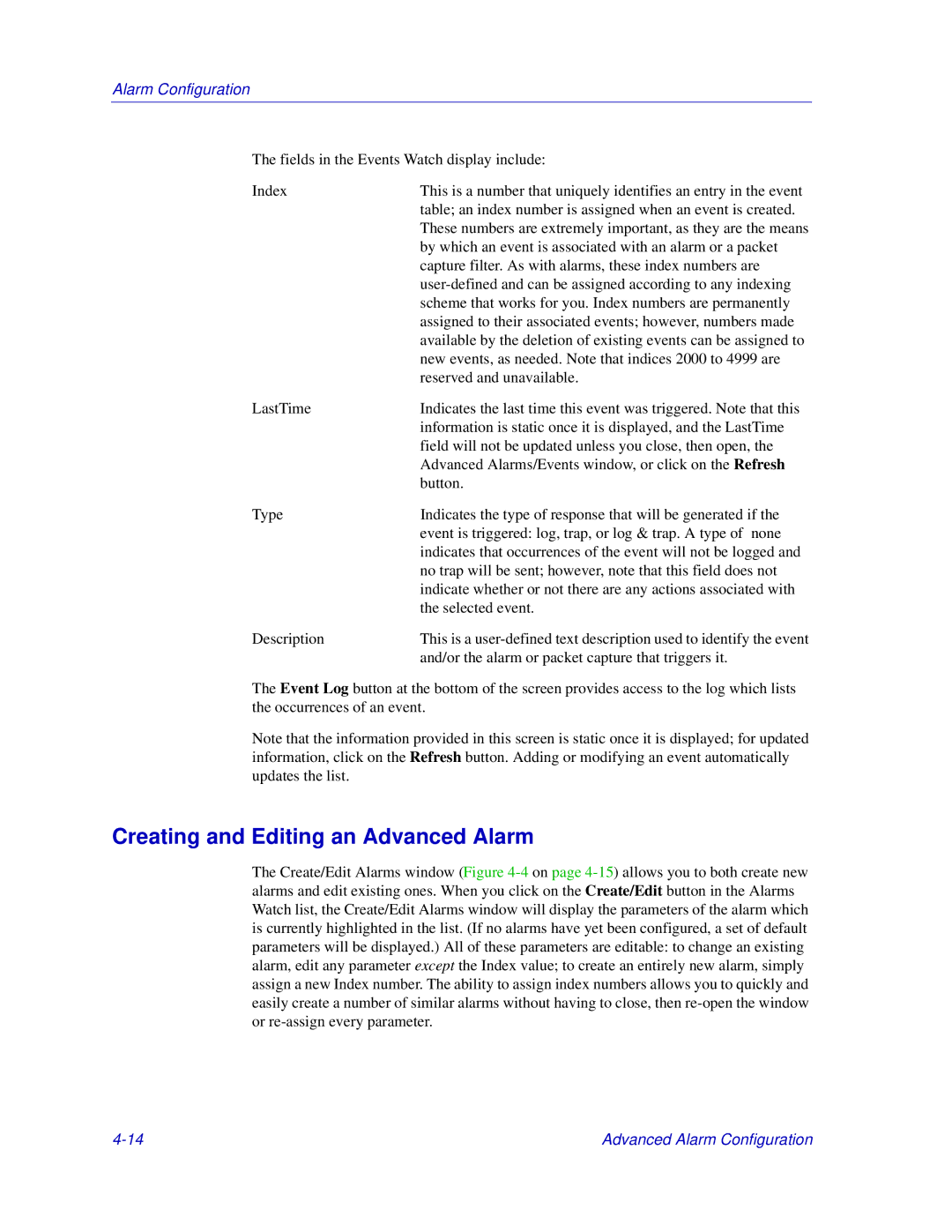Alarm Configuration
The fields in the Events Watch display include:
Index | This is a number that uniquely identifies an entry in the event |
| table; an index number is assigned when an event is created. |
| These numbers are extremely important, as they are the means |
| by which an event is associated with an alarm or a packet |
| capture filter. As with alarms, these index numbers are |
| |
| scheme that works for you. Index numbers are permanently |
| assigned to their associated events; however, numbers made |
| available by the deletion of existing events can be assigned to |
| new events, as needed. Note that indices 2000 to 4999 are |
| reserved and unavailable. |
LastTime | Indicates the last time this event was triggered. Note that this |
| information is static once it is displayed, and the LastTime |
| field will not be updated unless you close, then open, the |
| Advanced Alarms/Events window, or click on the Refresh |
| button. |
Type | Indicates the type of response that will be generated if the |
| event is triggered: log, trap, or log & trap. A type of “none” |
| indicates that occurrences of the event will not be logged and |
| no trap will be sent; however, note that this field does not |
| indicate whether or not there are any actions associated with |
| the selected event. |
Description | This is a |
| and/or the alarm or packet capture that triggers it. |
The Event Log button at the bottom of the screen provides access to the log which lists the occurrences of an event.
Note that the information provided in this screen is static once it is displayed; for updated information, click on the Refresh button. Adding or modifying an event automatically updates the list.
Creating and Editing an Advanced Alarm
The Create/Edit Alarms window (Figure
Advanced Alarm Configuration |
